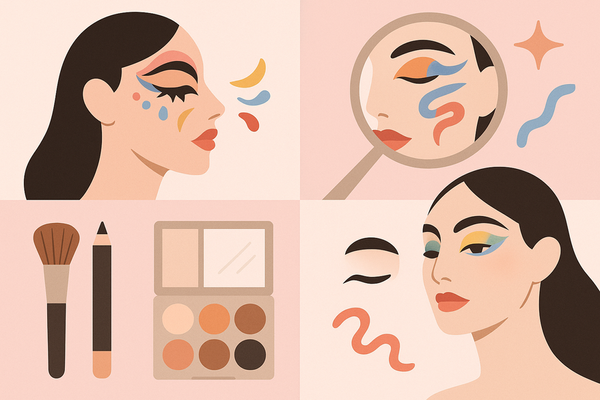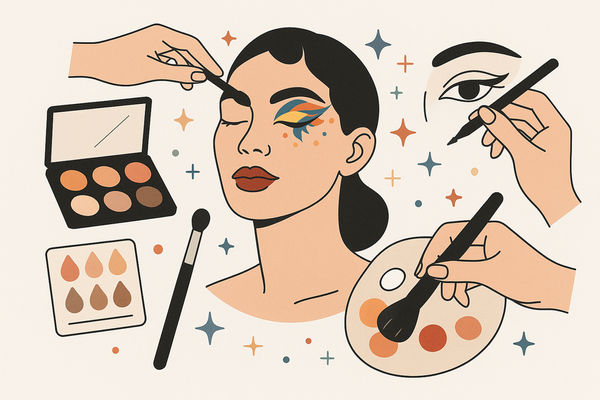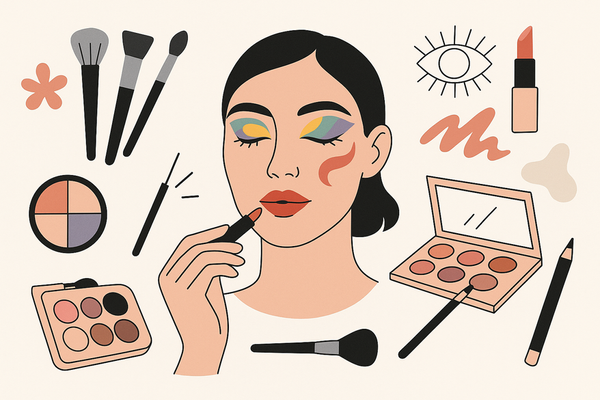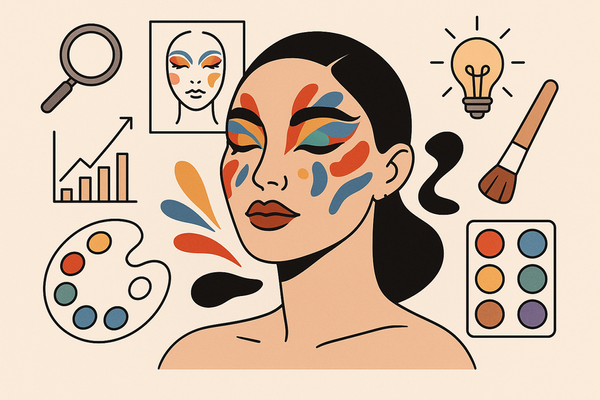Introduction to Creative Makeup Designs
Explore the world of creative makeup designs, where bold colors and unique textures turn faces into art, driving individuality and global trends.
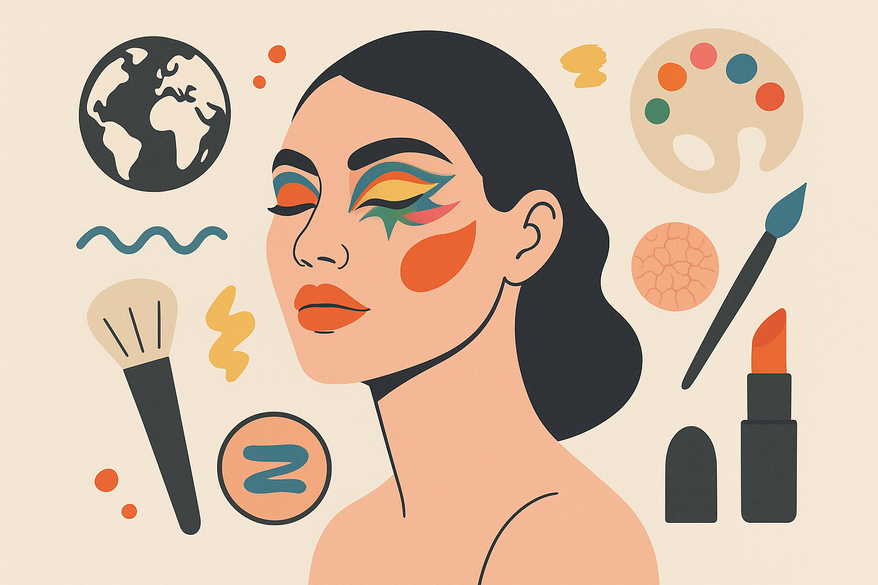
Estimated reading time: 8 minutes
Key Takeaways
- Creative makeup designs transform faces into wearable art.
- Bold colors, imaginative textures, and tech tools drive boundary-pushing trends.
- Master color theory, blending techniques, and professional tools for standout looks.
- Prep, practice, and safety ensure longevity and skin health.
- Inspiration comes from art history, fashion, nature, and digital innovation.
Table of Contents
- Context and Trends
- Elements of Creative Makeup Designs
- Techniques and Tools
- Best Practices
- Step-by-Step Guidance
- Inspiration and Expert Advice
- FAQ
Context and Trends
Creative makeup designs turn faces into living art. Bold creativity meets beauty routines as social media, high-fashion editorials, and runway shows drive global trends and celebrate individuality.
Historical Perspective
- Ancient roots: Civilizations used ceremonial face paints for rituals.
- Medieval to modern: From natural pigments in the Renaissance to powder and lipstick in the 20th century.
- Cultural shifts: Makeup evolved with airbrush techniques, synthetic dyes, and high-definition pigments.
- Today: Routines mix art history with tech advances like virtual try-on.
Current Trends
- Expressive palettes: Neon greens, electric blues, rose-gold metallics.
- Bold graphic shapes: Sharp liners and color blocking across lids and cheeks.
- Unconventional materials: Glitter overlays, holographic foils, 3D nail and face embellishments.
- Forecast: Pinterest forecasts inventive face art as a top trend for 2025.
- Everyday meets editorial: Street-style influencers remix runway looks.
Elements of Creative Makeup Designs
Bold Colors
Bold colors are the heart of inventive makeup artistry. Think neon pigments, reflective metallics, and deeply saturated hues.
- Neon brights for electric looks.
- Metallics (rose-gold, silver) for futuristic shine.
- Rich mattes for drama.
Unique Textures
Innovative textures elevate designs from flat to dimensional. Layers of glitter, fine shimmer, and 3D embellishments create tactile interest.
- Glitter overlays and pigments.
- Silicone accents and prosthetic pieces.
- Matte, satin, and high-gloss finishes.
Unconventional Styles
Push boundaries with graphic liners, color blocking, and sculptural effects. Fantasy motifs tell stories beyond everyday looks.
- Color-blocked cheeks in geometric patterns.
- Floating creases above natural eye folds.
- Narrative motifs: floral vines, abstract shapes.
Artistic Impact
Faces become canvases where each brushstroke tells a story, challenging beauty norms and sparking conversations about art and self-expression.
- Storytelling through color and shape.
- Emotional expression—joy in rainbow hues, mystery in dark metallics.
- Breaking standards—every feature is an opportunity.
Techniques and Tools
Techniques
Mastery of color theory and blending is essential. Advanced methods bring depth and precision:
- Color theory basics: warm vs. cool and complementary contrasts.
- Airbrush: smooth gradients and high coverage.
- Stippling: build fine texture.
- Layering: mix mattes, shimmers, metallics.
- Precision detailing: graphic liners and dot work.
Professional Tools and Products
Invest in quality brushes, sponges, and pigment-rich palettes. Special effects kits and AI tools amplify creativity:
- High-quality brushes: blending, detail, angled liners.
- Sponges and beauty blenders for base work.
- Pigment-rich eyeshadow palettes (neons, metallics).
- Graphic liners (gel, liquid, pencil).
- Special effects: loose glitter, mica flakes, silicone prosthetics.
- AI-assisted and virtual try-on tools to plan your layout, like Makeup Check AI.

Best Practices
Prep, practice, and safety ensure your art looks its best:
- Skin prep: cleanse, tone, hydrate, prime for longevity.
- Layer products thinly to avoid cracking.
- Use skin-safe adhesives and materials.
- Beginners: start with one bold element—color or texture—before mixing techniques.
- Experts: combine paints, prosthetics, and mixed media for avant-garde creations.
Step-by-Step Guidance
- Prep Skin: Cleanse, moisturize, apply primer.
- Design Concept: Sketch face chart or use a digital tool to plan color story and texture placement.
- Base Creation: Apply foundation and concealer to even tone.
- Outline Shapes: Mark zones with a white or nude liner; use concealer to carve sharp edges.
- Apply Colors & Textures: Layer pigments from light to dark; add glitter, shimmer, or silicone accents.
- Detail Work: Define edges with fine brushes or graphic liners; highlight and contour for 3D effect.
- Set & Seal: Use setting spray and transparent powder.
Customization Tips
- Tailor shapes and hues to face shape and skin tone.
- For events, up intensity; for everyday, soften edges and reduce shimmer.
Inspiration and Expert Advice
- Traditional art: painting styles, brushwork techniques.
- Fashion editorials and runway shows.
- Social media makeup artists and influencers.
- Nature: florals, landscapes, animal patterns.
- Film and theater: character looks and special effects via artistic makeup inspiration AI.
“Every brushstroke reveals a piece of your soul—embrace individuality and personal expression.”
For more on pushing beauty boundaries, see creative makeup designs AI. Share your inventive looks, tips, or questions in the comments or tag us on social media. Join our community and let your face become your canvas.
FAQ
- Q: Where can I learn advanced techniques?
- A: Explore online video tutorials, professional workshops, and social media masterclasses for step-by-step demos.
- Q: How do I make creative makeup last longer?
- A: Prep skin well, use quality primer and long-wear products, build thin layers, and finish with a strong-hold setting spray.
- Q: Are these looks suitable for everyday wear?
- A: Yes. Scale back intensity by using softer hues and fewer 3D elements for a daytime-friendly version.
- Q: What if I make mistakes?
- A: Use a clean brush with makeup remover or concealer to correct edges. Practice builds confidence and precision.

